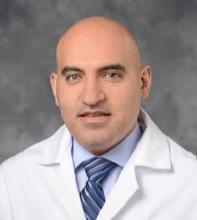Thoracic Oncology and Chest Procedures Network
Pleural Disease Section
Considerable heterogeneity exists in the management of primary spontaneous primary spontaneous pneumothorax (PSP). American and European guidelines have been grappling with this question for decades: What is the best way to manage PSP? A 2023 randomized, controlled trial (Marx et al. AJRCCM) sought to answer this.
The study recruited 379 adults aged 18 to 55 years between 2009 and 2015, with complete and first PSP in 31 French hospitals. One hundred eighty-nine patients initially received simple aspiration and 190 received chest tube drainage. The aspiration device was removed if a chest radiograph (CXR) following 30 minutes of aspiration showed lung apposition, with suction repeated up to one time with incomplete re-expansion. The chest tubes were large-bore (16-F or 20-F) and removed 72 hours postprocedure if the CXR showed complete lung re-expansion.
Simple aspiration was statistically inferior to chest tube drainage (29% vs 18%). However, first-line simple aspiration resulted in shorter length of stay, less subcutaneous emphysema, site infection, pain, and one-year recurrence.
Since most first-time PSP occurs in younger, healthier adults, simple aspiration could still be considered as it is better tolerated than large-bore chest tubes. However, with more frequent use of small-bore (≤14-F) catheters, ambulatory drainage could also be a suitable option in carefully selected patients. Additionally, inpatient chest tubes do not need to remain in place for 72 hours, as was this study’s protocol. Society guidelines will need to weigh in on the latest high-quality evidence available for final recommendations.



